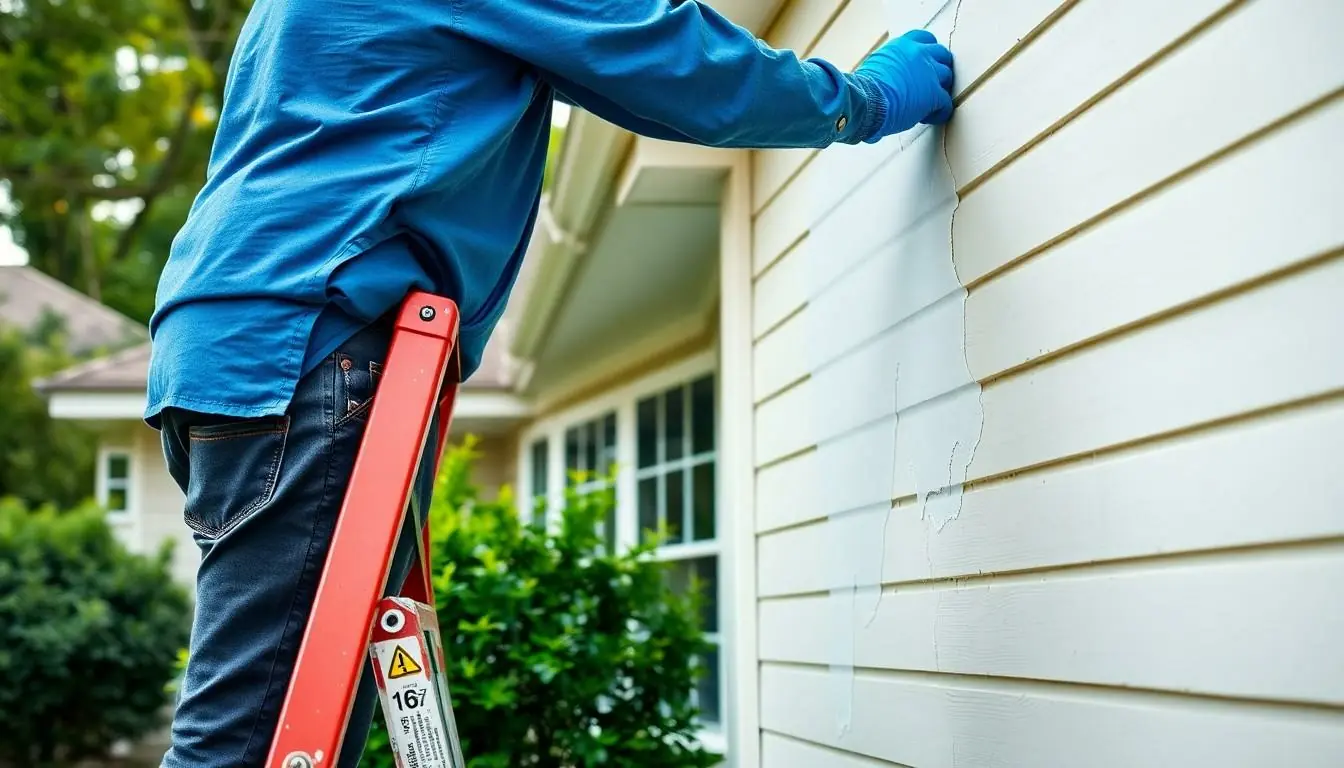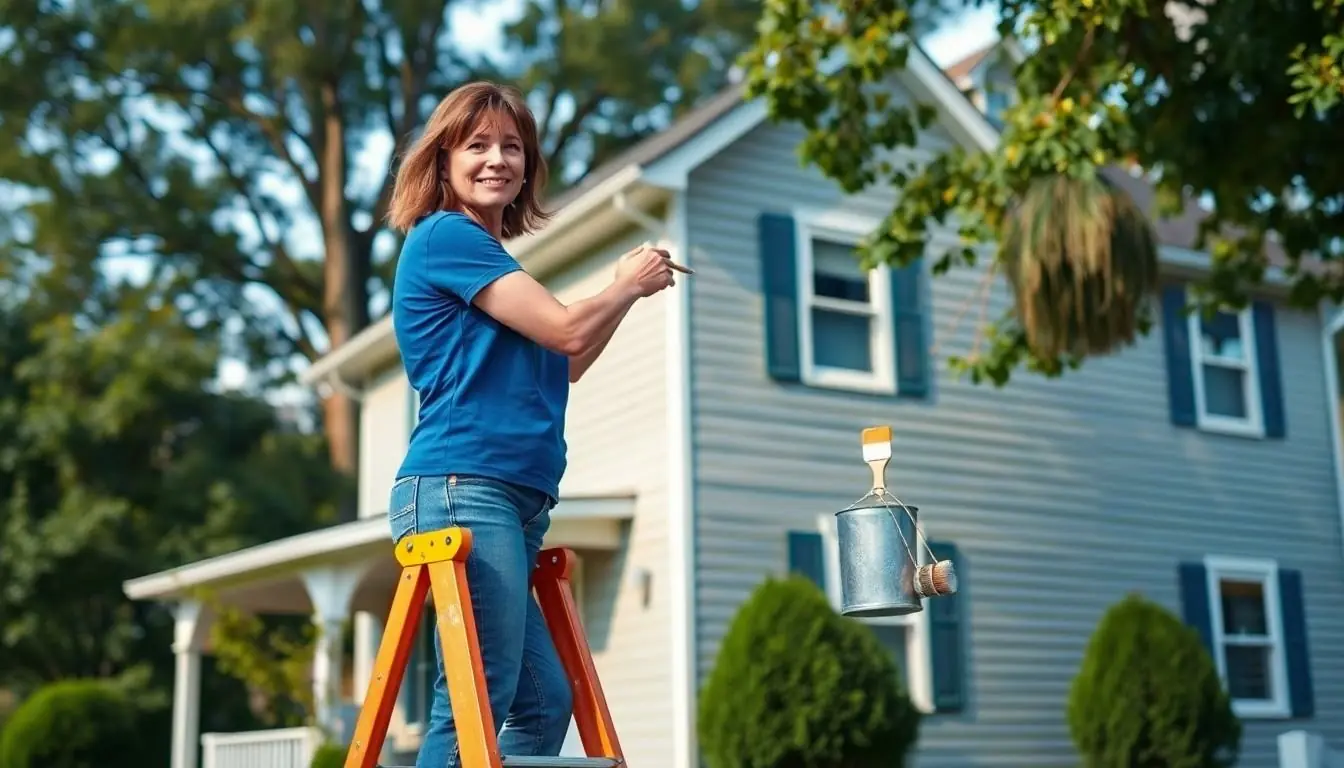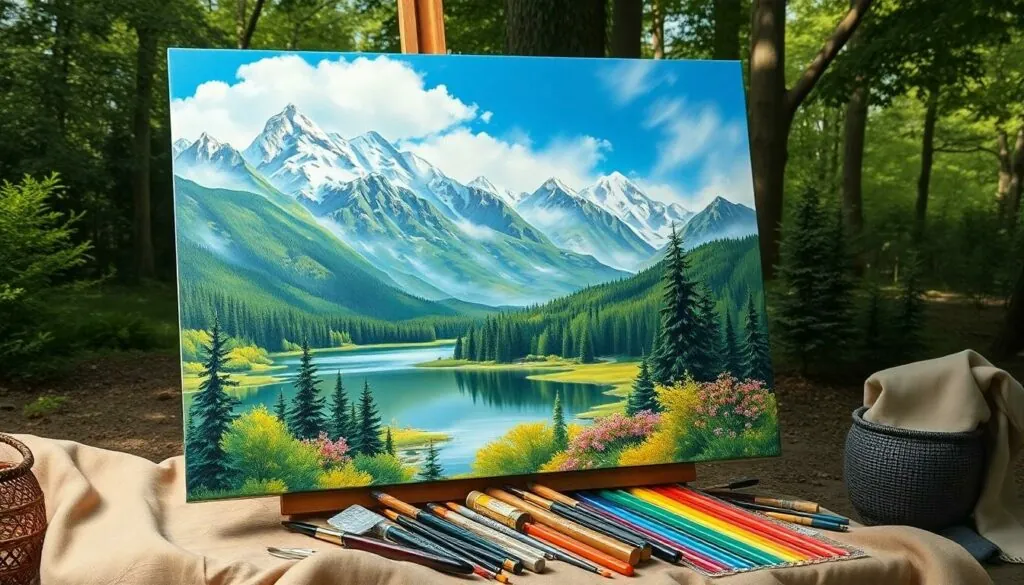When it comes to sprucing up a home, few things pack a punch like a fresh coat of paint. It’s like giving your house a stylish new outfit without the hassle of shopping—no dressing rooms or questionable fashion choices involved. Whether it’s a bold splash of color or a subtle refresh, painting can transform a drab facade into a stunning masterpiece that’ll make the neighbors green with envy.
Table of Contents
ToggleThe Importance of Painting Houses
Painting houses plays a vital role in maintaining their beauty and value. A fresh coat of paint not only enhances aesthetics but also protects the exterior surfaces from weather-related damage. Many homeowners choose colors that reflect their personality and style, creating an inviting atmosphere.
Preservation of wood and siding significantly benefits from painting. Exposure to moisture can lead to rot; painting creates a barrier that repels water. Preventative maintenance also includes sealing cracks and gaps, which reduces the risk of infestations and structural issues.
Regularly painted homes tend to have higher resale values. Real estate studies show that houses with freshly painted exteriors and interiors attract more potential buyers. Curb appeal often hinges on aesthetics, and vibrant colors or well-chosen neutrals can make a difference.
In addition, painting provides an opportunity for homeowners to express individual tastes. Color psychology suggests that certain shades evoke specific emotions, making it easy to create desired feelings within the home. Choosing the right color scheme can significantly impact the overall atmosphere, making a space feel more relaxing or energizing.
Updating paint can also align with changing trends in design. Today’s market offers a variety of options, including eco-friendly paints that contribute to sustainability efforts. Conscious choices regarding materials benefit both homeowners and the environment.
Overall, painting houses is an essential aspect of homeownership that combines functionality with personal expression. Prioritizing regular maintenance ensures homes remain attractive and structurally sound while reflecting the unique style of their occupants.
Preparing for the Project

Preparation plays a crucial role in the success of painting houses. Taking the time to choose the right materials and assess surface conditions ensures optimal results and longevity.
Choosing the Right Materials
Selecting appropriate paint and tools directly impacts the project’s outcome. Acrylic latex paint, known for its durability and ease of application, is ideal for exterior surfaces. Additionally, primers enhance paint adhesion, especially on raw or damaged surfaces. Choose high-quality brushes and rollers for smooth finishes. When considering colors, opt for shades that complement the home’s architecture and neighborhood aesthetics. Eco-friendly paint options offer reduced environmental impact without sacrificing quality.
Assessing Surface Conditions
Examining surfaces before painting reveals necessary repairs and preparations. Look for signs of mold, mildew, or peeling paint. Addressing these issues prevents future complications. Ensure surfaces are clean and free of debris for better adhesion. Depending on the condition, power washing may be necessary to remove dirt and grime. Cracks and holes require filling with appropriate caulk or spackle. An even, well-prepared surface promotes a professional-looking finish that lasts longer.
Techniques for Painting Houses
Understanding the right techniques enhances the painting process and outcome. Multiple methods exist, each suitable for specific situations and preferences.
Brush vs. Roller vs. Sprayer
A brush offers control, making it ideal for detailed areas like trim and edges. It allows for precision that rollers or sprayers might miss. Rollers cover large surface areas quickly, providing consistent texture and finish. For extensive projects, a sprayer delivers an even coat with speed, but it requires careful handling to avoid overspray. Each tool has its strengths, so selecting the right one depends on the project’s scale and desired detail.
Layering and Finishing Touches
Layering paint plays a vital role in achieving depth and vibrancy. Applying two or more coats ensures the color is rich and uniform. Allowing adequate drying time between layers prevents issues like dripping or uneven texture. After the final coat, adding finishing touches such as touch-ups on edges completes the look. Employing techniques like clear sealing can enhance durability and shine.
Maintenance and Longevity
Regular maintenance ensures that paint jobs withstand the elements. Homeowners should schedule inspections at least once a year. These evaluations will identify any signs of wear, such as chipping, fading, or mold. Addressing these issues promptly prevents costlier repairs later. A thorough inspection may also involve checking for moisture damage, which can compromise the integrity of the paint. Detecting problems early ensures the paint job remains vibrant and effective.
Regular Inspections
Regular inspections play a crucial role in maintaining painted surfaces. Each inspection should focus on specific areas prone to damage, like eaves, trims, and baseboards. Homeowners can check for bubbling or peeling paint, which indicates moisture issues. Monitoring for dirt accumulation also helps maintain aesthetic appeal. Should any issues arise, addressing them immediately can extend the lifespan of the paint. Sticking to a seasonal schedule promotes timely upkeep and preserves the overall appearance of the home.
Touch-Up Techniques
Touch-ups are essential for maintaining a consistent look. Homeowners should use the same paint brand and color for effective blending. Applying touch-up paint with a small brush allows for precision, particularly in detailed areas. Common areas for touch-ups include corners, edges, and spots where furniture may have rubbed against the walls. Using a feathery stroke can help blend the new paint, minimizing noticeable differences. Regularly performing these touch-ups keeps the home looking fresh and well-cared for, contributing to its overall longevity.
Cost Considerations
Evaluating the costs associated with painting houses is crucial for homeowners. Several factors influence overall expenses, including the size of the home, quality of materials, and labor costs.
A smaller home, typically around 1,500 square feet, may incur painting costs ranging from $1,500 to $4,500. Larger homes, over 3,000 square feet, can see expenses between $3,000 and $6,000 or more. Various aspects contribute to these costs, such as preparation work, the type of paint selected, and whether a professional service is hired or if the homeowner undertakes a DIY approach.
Quality paint generally costs anywhere from $20 to $70 per gallon. Durable paints tend to require fewer coats, reducing labor costs and long-term maintenance. Labor rates vary significantly, with professionals charging between $25 and $75 per hour, depending on regional demand and expertise.
The choice between interior and exterior painting also affects expenses. Exterior projects often demand more preparation and weather-resistant products, incurring higher costs than interior jobs. Furthermore, seasonal factors can play a role; painting in peak season may lead to increased rates due to demand.
Finally, homeowners should consider potential hidden costs. Unforeseen issues, such as mold or damaged wood, can arise during the project. Addressing these concerns may require additional funds, underscoring the importance of thorough surface assessments before starting a painting project. By clearly understanding these cost considerations, homeowners can create a realistic budget for their painting endeavors, ensuring effective results without unexpected financial strain.
Painting a house is more than just a cosmetic upgrade; it’s a vital part of home maintenance and personal expression. By choosing the right colors and techniques, homeowners can significantly enhance their property’s appeal and value. Regular upkeep ensures that the home not only looks great but also withstands the elements over time.
Understanding the costs and preparation involved can make the painting process smoother and more effective. Whether opting for DIY or hiring professionals, a well-executed paint job can create lasting impressions. Ultimately, a freshly painted home reflects the owner’s style while protecting the investment for years to come.



